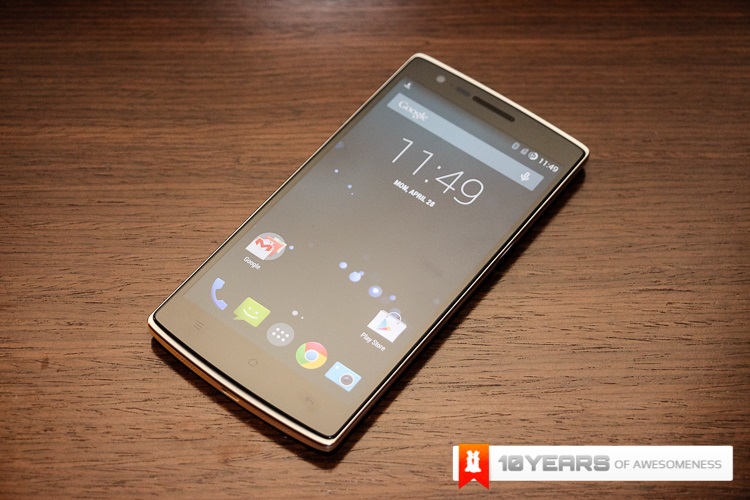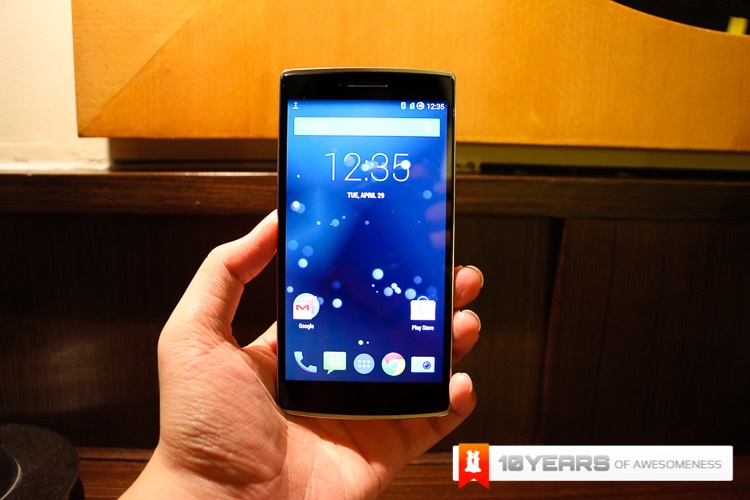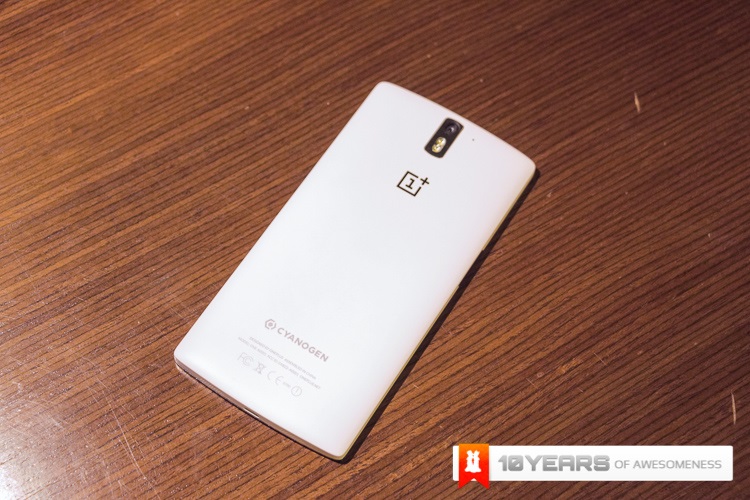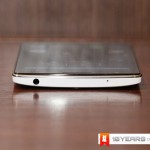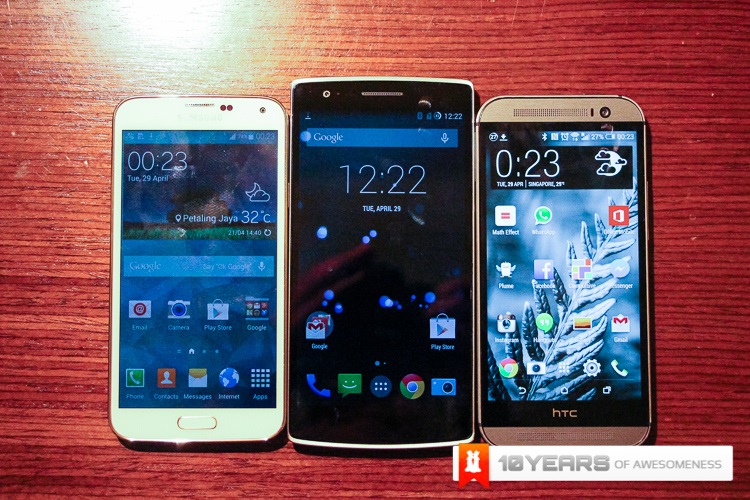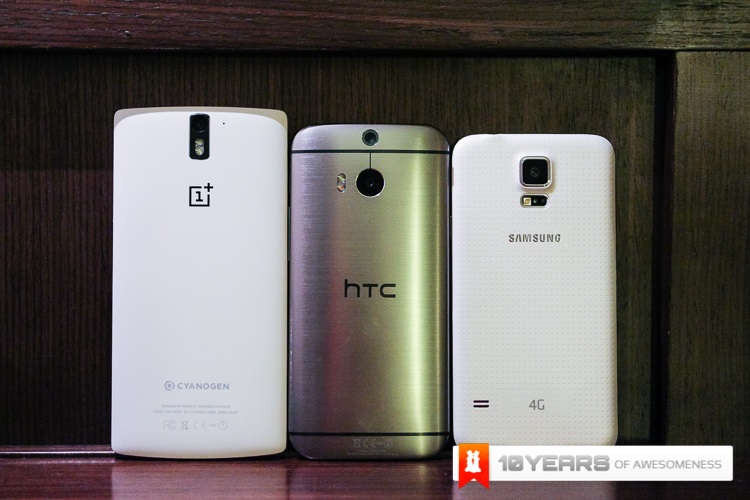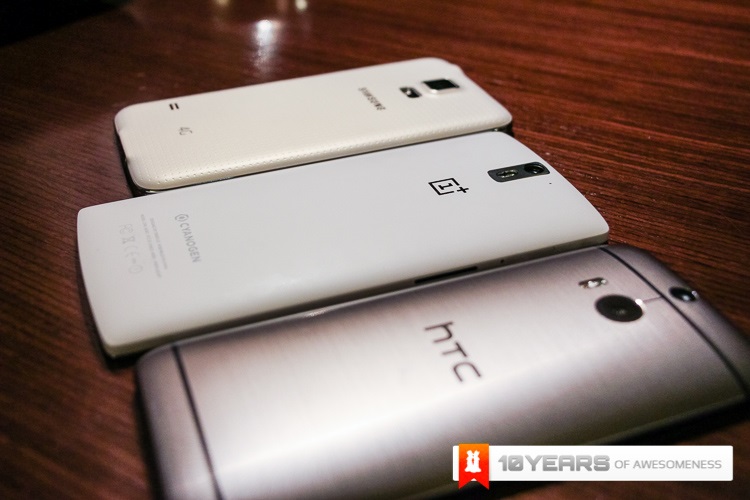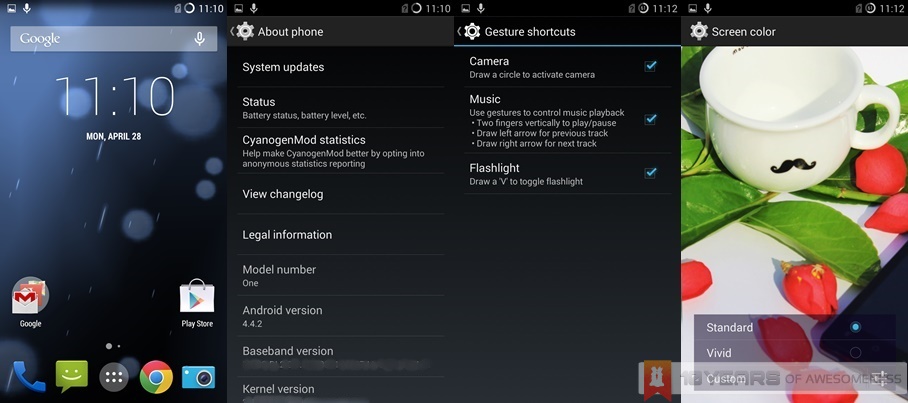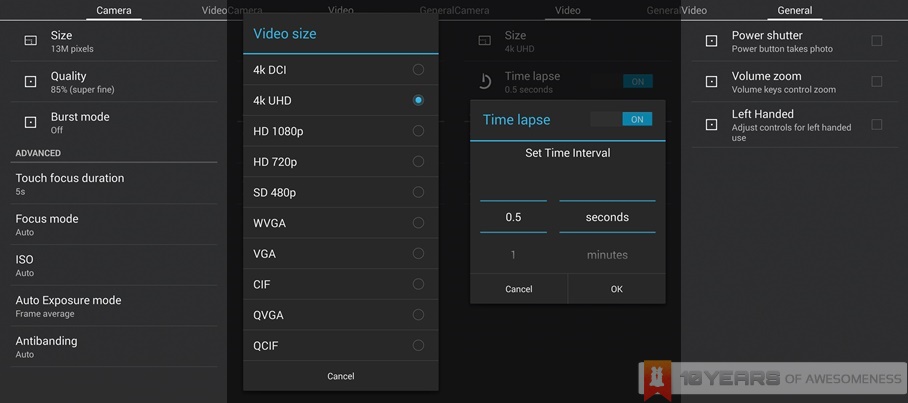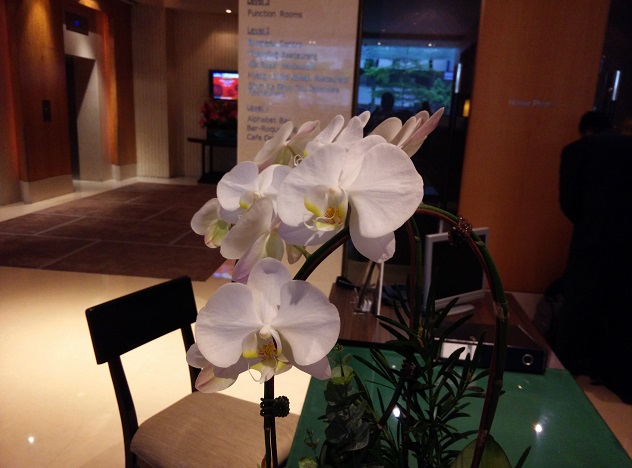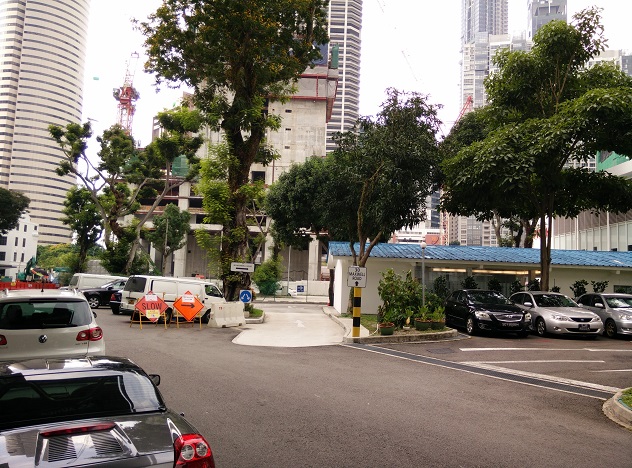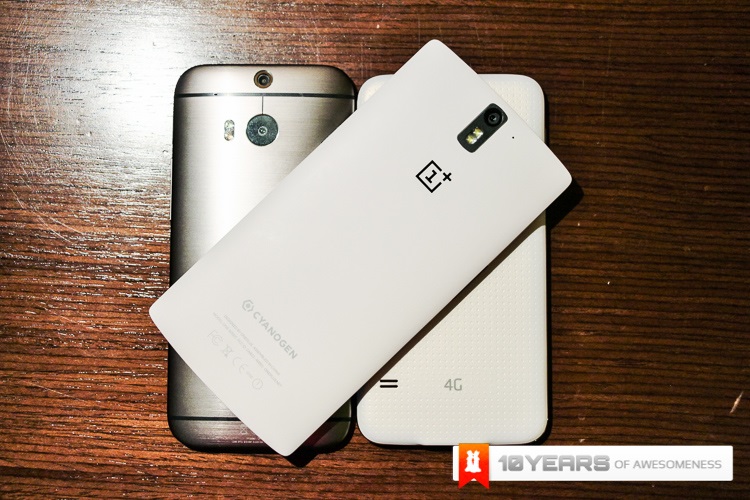Slightly over a week ago, the world was shocked by a little-known startup from China. OnePlus, which was formed only in December 2013, announced its flagship smartphone called the One, and claimed it to be the “2014 flagship killer“. The OnePlus One matches the top-tier hardware normally found in heavyweights such as the Samsung Galaxy S5 and the HTC One, but is offering its debut smartphone at a starting price that’s less than half the retail price of normal flagship smartphones.
To offer high-end hardware is half the story. Great phones offer a package: superb hardware, precious design, amazing build quality and finally, great software to go along with everything. Does the OnePlus One offer all these and beyond?
Before we continue, here’s a quick disclaimer: this hands-on was done with a prototype device of the OnePlus One. The final design, we’ve been told, will remain the same save for one minor change in the volume rocker’s position and button depth.
As a 5.5-inch smartphone, some would argue that the OnePlus One is in “phablet” territory. But holding it, the One felt more of an elongated smartphone such as the Samsung Galaxy S5. The width of the One is just about right, making it very comfortable for use with two hands. We’re still unsure of the company’s earlier claim that it is smaller than a Sony Xperia Z1, but it does feel small for a device with a screen that large.
It was also revealed shortly after the One’s launch that the design of the smartphone closely resembled that of Oppo’s Find 7; in fact, the white cover has a very similar texture to the Oppo N1’s matte, soft touch back. The slightly curved back, in addition to the almost rubberized finish, makes the One one of the more comfortable and grippy devices I’ve used so far.
The 5.5-inch Full HD display, while not outstanding, is very capable to hold its own. At its lowest brightness setting (as can be seen below), the One isn’t as bright as the brilliant Super LCD 3 of the (other) HTC One (M8), but rather on par with the Samsung Galaxy S5. What I really do appreciate though, is that throughout the brief time I spent with the OnePlus One, I almost did not experience over-aggressive auto-brightness adjustments – something that happens very often on other smartphones I’ve used.
The OnePlus One runs on a customized version of Cyanogenmod 11, called Cyanogenmod 11S. Widely known within the Android enthusiast community as one of the best custom ROMs around, OnePlus has added some additional features into CM11. Again, the Oppo influence is strong here, as some of the “screen-off gestures” found on ColorOS, such as drawing a circle on the screen to launch the camera, a “V” shape to switch on the flashlight, and other music-based controls, are all here on CM11S. But for the most part, Cyanogenmod 11S retains the near-stock Android look and feel – which is always welcome.
Given that this is not the final retail unit, I was expecting some bugs within the software. There were some (usually involving the awesome Screencast app), but performance-wise, the One is snappy and performs just as well as any Android flagship – without the unnecessary bloat. Being a Cyanogenmod ROM, there are also plenty of options to further customize the entire device to your heart’s content, but unfortunately we only managed some precious few hours with it and were not able to delve into it.
Besides offering premium hardware such as a Qualcomm Snapdragon 801 processor with 3GB of RAM, the OnePlus One also packs a 13MP Sony IMX 214 sensor – yes, the same one found in the Oppo Find 7. Being a Cyanogenmod build, the camera UI is almost the same as stock Android, but with a few exceptions. The UI does not use the same tap-and-hold gesture to open more options like on stock Android, and the expanded settings menu is more friendly to use.
We did manage to try out the OnePlus One’s camera for a short while, and the sample images can be seen below. Do note also that the final retail unit may have some tweaks in the camera software.
Click on each image for full resolution
In all, though, the OnePlus One is a very impressive package. It’s managed to pack some serious hardware into a pleasantly designed chassis that feels solid in the hands. What really goes in its favour, however, is with its retail price. At $299 for the 16GB and $349 for the 64GB versions, it is a no-brainer for anyone looking to find a premium Android smartphone. And, with news that they will be expanding availability later in June, we could be in for a very exciting period.
Thank you very much for loaning the device, Aloysius!
Follow us on Instagram, Facebook, Twitter or Telegram for more updates and breaking news.


